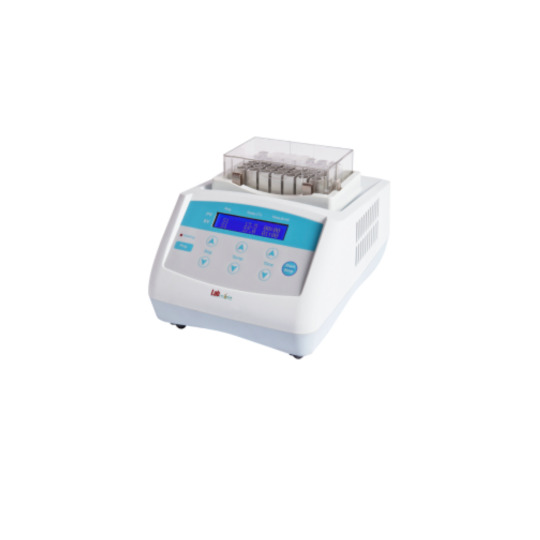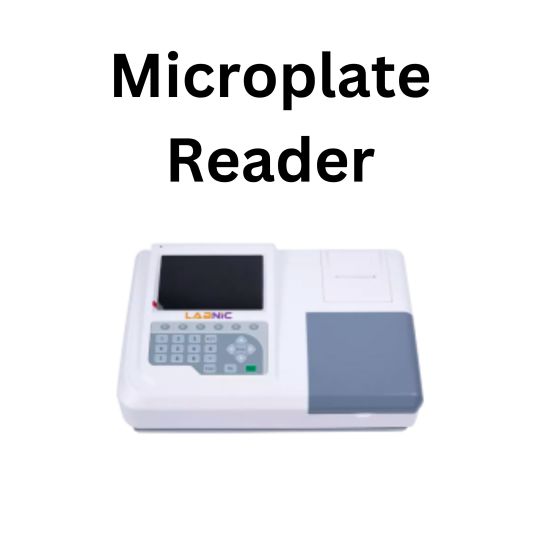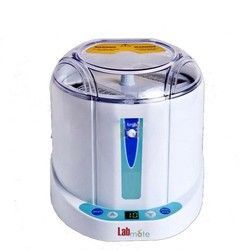#microplant
Explore tagged Tumblr posts
Note
dunno if youre still doing art reqs
but can i get anything vee x dandy??
plz and tysm!!

; YAAHH ! Have a Flowervision art , , I seen my Tiktok Moot shipping this So I thought of making a Art for it too ! ^0^
; Also my art requests are still Open , , I only close them if im feeling stressful
#staticchoirs requests#roblox#dandys world#dandy's world#vee#dandys world vee#dw vee#dandy#dandys world dandy#dw dandy#vee x dandy#dandy x vee#Flowervision#Microplant#roblox art#roblox fanart#Dandys world art#Dandys world fanart#Ship art#artwork#art#my art#;;#osc#object show community#object shows
37 notes
·
View notes
Text
Understanding the Microplate Washer: An Essential Tool in Modern Laboratories

In today’s fast-paced scientific landscape, precision and efficiency are paramount, particularly in laboratories conducting high-throughput assays. One tool that exemplifies these attributes is the microplate washer. This indispensable instrument streamlines the washing processes in various assays, such as ELISAs (enzyme-linked immunosorbent assays), multiplex assays, and cell-based studies. By delivering consistent, reproducible washing results, microplate washers have become a cornerstone of laboratory workflows. For more in-depth technical specifications and recommendations, visit our site.
What is a Microplate Washer?
A microplate washer is a laboratory device specifically designed to clean microplates used in assays and experiments. Microplates, also known as microtiter plates, are flat plates with multiple wells used as small test tubes. These washers are engineered to remove unbound substances, reagents, and contaminants from the wells while preserving the contents critical to the assay’s outcome. By automating this process, microplate washers significantly reduce the risk of human error and variability.
Core Features of Microplate Washers
Modern microplate washers come with a variety of features that enhance their functionality and adaptability to specific applications:
Precision Control
Microplate washers offer adjustable washing parameters, such as aspiration strength, dispense volume, and timing. This ensures compatibility with different plate formats and assay types, including delicate cell-based assays.
Versatility
Many washers support both 96-well and 384-well microplates, catering to diverse throughput requirements. Advanced models can even accommodate specialized plate types.
Programmability
These devices are equipped with user-friendly software that allows researchers to customize and save wash protocols. This feature is especially valuable in multi-step assays requiring precise timing and reagent handling.
Cross-Contamination Prevention
To maintain assay integrity, microplate washers incorporate features like vacuum-based aspiration systems, specialized manifold designs, and built-in wash buffers to prevent cross-contamination between wells.
Ease of Maintenance
Features like automated self-cleaning cycles and clog detection ensure the washer’s longevity and reliability, minimizing downtime and maintenance effort.
Applications of Microplate Washers
Microplate washers are utilized across various fields, including:
Biomedical Research
Essential for ELISAs, which are commonly used to detect and quantify specific proteins, antigens, or antibodies in biological samples.
Pharmaceutical Development
Critical in high-throughput screening (HTS) to evaluate the effects of drug candidates on cellular or biochemical targets.
Clinical Diagnostics
Used in diagnostic laboratories for routine testing of infectious diseases, autoimmune disorders, and other conditions.
Environmental Testing
Applied in assays that detect contaminants or pollutants in environmental samples.

Advantages of Using a Microplate Washer
Adopting a microplate washer in laboratory workflows offers numerous advantages:
Enhanced Accuracy
Manual washing is prone to inconsistencies, whereas automated washers deliver uniform results, ensuring assay reliability.
Increased Throughput
By automating washing steps, microplate washers enable researchers to process more samples in less time, boosting overall productivity.
Reduction in Reagent Waste
Precise control over dispense volumes minimizes reagent consumption, saving costs over time.
Improved Safety
Automated washers limit direct handling of potentially hazardous reagents, enhancing user safety.
Key Considerations When Choosing a Microplate Washer
Selecting the right microplate washer depends on several factors:
Assay Requirements
Consider the types of assays you perform and whether the washer supports specific needs, such as handling viscous liquids or accommodating fragile cells.
Plate Formats
Ensure the device is compatible with the microplate formats used in your lab.
Ease of Use
Look for intuitive interfaces and programmable features that simplify operation.
Budget
While advanced models offer more features, it’s important to balance functionality with cost.
Conclusion
A microplate washer is a vital asset for laboratories aiming to enhance efficiency, accuracy, and consistency in their workflows. Its ability to automate complex washing steps ensures reliable assay outcomes, making it indispensable in various scientific fields. Whether you are involved in biomedical research, pharmaceutical development, or clinical diagnostics, investing in a high-quality microplate washer can significantly elevate your lab’s capabilities. For a deeper dive into the best microplate washers available and their cutting-edge features, visit our site.
0 notes
Text
Microplate Systems Market to Hit $1293.18 Billion by 2032
The global Microplate Systems Market was valued at USD 930.51 Billion in 2024 and it is estimated to garner USD 1293.18 Billion by 2032 with a registered CAGR of 4.2% during the forecast period 2024 to 2032.
The report throws light on the competitive scenario of the global Microplate Systems Market to know the competition at global levels. Market experts also provided the outline of each leading player of the global Microplate Systems Market for the market, considering the key aspects such as the areas of operation, production, and product portfolio. In addition, the companies in the report are studied based on vital factors such as company size, market share, market growth, revenue, production volume, and profit.
The global Microplate Systems Market is fragmented with various key players. Some of the key players identified across the value chain of the global Microplate Systems Market include Bio-Rad Laboratories Inc. (US), PerkinElmer (US), Danaher Corporation (US), Thermo Fisher Scientific (US), Agilent Technologies Inc. (US), Tecan (Switzerland), BMG Labtech (Germany), Promega Corporation (US), Enzo Life Sciences Inc. (US), Berthold Technologies (Germany), Biochrom (UK), Corning (US), Lonza (Switzerland), Brucker Corporation (US), Dynex Technologies (US), Bio-One International GmbH (Austria), Accuris Instruments (US), CTK Biotech Inc. (US), LTEK (South Korea), JASCO (Japan), Rayto (China), Micro Lab Instruments (India), Biohit Oyj (Finland), Mindray (China), Hudson Robotics (US), and others. etc. Considering the increasing demand from global markets various new entries are expected in the Microplate Systems Market at regional as well as global levels.
Download Microplate Systems Market Sample Report PDF: https://www.vantagemarketresearch.com/microplate-systems-market-1781/request-sample
Top Competitors:
Bio-Rad Laboratories Inc. (US), PerkinElmer (US), Danaher Corporation (US), Thermo Fisher Scientific (US), Agilent Technologies Inc. (US), Tecan (Switzerland), BMG Labtech (Germany), Promega Corporation (US), Enzo Life Sciences Inc. (US), Berthold Technologies (Germany), Biochrom (UK), Corning (US), Lonza (Switzerland), Brucker Corporation (US), Dynex Technologies (US), Bio-One International GmbH (Austria), Accuris Instruments (US), CTK Biotech Inc. (US), LTEK (South Korea), JASCO (Japan), Rayto (China), Micro Lab Instruments (India), Biohit Oyj (Finland), Mindray (China), Hudson Robotics (US), and others.
Understanding the Industry's Growth, has released an Updated report on the Microplate Systems Market. The report is mixed with crucial market insights that will support the clients to make the right business decisions. This research will help new players in the global Microplate Systems Market to sort out and study market needs, market size, and competition. The report provides information on the supply and market situation, the competitive situation and the challenges to the market growth, the market opportunities, and the threats faced by the major players.
Regional Analysis
-North America [United States, Canada, Mexico]
-South America [Brazil, Argentina, Columbia, Chile, Peru]
-Europe [Germany, UK, France, Italy, Russia, Spain, Netherlands, Turkey, Switzerland]
-Middle East & Africa [GCC, North Africa, South Africa]
-Asia-Pacific [China, Southeast Asia, India, Japan, Korea, Western Asia]
You Can Buy This Report From Here: https://www.vantagemarketresearch.com/buy-now/microplate-systems-market-1781/0
Full Analysis Of The Microplate Systems Market:
Key findings and recommendations point to vital progressive industry trends in the global Microplate Systems Market, empowering players to improve effective long-term policies.
The report makes a full analysis of the factors driving the development of the market.
Analyzing the market opportunities for stakeholders by categorizing the high-growth divisions of the market.
Questions answered in the report
-Who are the top five players in the global Microplate Systems Market?
-How will the global Microplate Systems Market change in the next five years?
-Which product and application will take the lion's share of the global Microplate Systems Market?
-What are the drivers and restraints of the global Microplate Systems Market?
-Which regional market will show the highest growth?
-What will be the CAGR and size of the global Microplate Systems Market during the forecast period?
Read Full Research Report with [TOC] @ https://www.vantagemarketresearch.com/industry-report/microplate-systems-market-1781
Reasons to Purchase this Microplate Systems Market Report:
-Analysis of the market outlook on current trends and SWOT analysis.
-The geographic and country level is designed to integrate the supply and demand organizations that drive industry growth.
-Microplate Systems Industry dynamics along with market growth opportunities in the coming years.
-Microplate Systems Market value (million USD) and volume (million units) data for each segment and sub-segment.
1 year consulting for analysts along with development data support in Excel. Competitive landscape including market share of major players along with various projects and strategies adopted by players in the last five years.
Market segmentation analysis including qualitative and quantitative analysis including the impact on financial and non-economic aspects.
Complete company profiles that include performance presentations, key financial overviews, current developments, SWOT analyzes and strategies used by major Microplate Systems Market players.
Check Out More Reports
Global NGS Sample Preparation Market: Report Forecast by 2032
Global Machine Control System Market: Report Forecast by 2032
Global Ready To Drink (RTD) Tea Coffee Market: Report Forecast by 2032
Global Automotive Night Vision Sensors Market: Report Forecast by 2032
Global Sound Bar Market: Report Forecast by 2032
#Microplate Systems Market#Microplate Systems Market 2024#Global Microplate Systems Market#Microplate Systems Market outlook#Microplate Systems Market Trend#Microplate Systems Market Size & Share#Microplate Systems Market Forecast#Microplate Systems Market Demand#Microplate Systems Market sales & price
0 notes
Text
0 notes
Text
Microplate Centrifuge 3.3 kg
Labnics microplate centrifuge offers fast pelleting, mixing and separation in microplate assays. it offers a 2200-2800 rpm speed range, 550xg relative centrifugal force and 2 standard PCR microplates. it features a low noise and vibration levels, supports short run and LCD screen and rubber base for stable operation.

1 note
·
View note
Text

Microplate washer
Microplate washer is a benchtop unit with 12 and 8-way interchangeable wash heads. Automated self-diagnostic program aids in easy error rectification. Built-in touch LCD screen for easy parameter accessibility and viewing. Automatic liquid monitoring system improves intra and interplate reproducibility and minimises the number of failed experiments.
#Microplate Washer manufacturer in Arkansas#Microplate Washer suppliers in Arkansas#Microplate Washer manufacturer in California#Microplate Washer suppliers in California#Microplate Washer manufacturer in Wyoming#Microplate Washer suppliers in Wyoming
0 notes
Text

The Labnic ELISA Microplate Washer is equipped with a large LCD screen display with a menu interface. It has large memory storage. which can store up to 48 user-programmed wash protocols. The ELISA microplate washer is capable of both whole plate washing and and single-strip washing. The ELISA microplate washer includes complete bottom-washing capability.
0 notes
Text
A microplate system is widely employed in laboratories for the measurement of chemical, biological or physical reactions, properties, and analytes within the well of a microplate.
0 notes
Text

Fluorometer LFFM-A10 is the next generation of benchtop dual-channel Fluorometer, features 365 ± 20 nm and 460 ± 20 nm excitation filter and measures dsDNA concentration with high sensitivity lower DNA detection limit of 0.5 ng/ul. It offers UV and blue channel fluorescence to measure fluorescence intensity of fluorescent reagent that combines with target molecule to read concentration of sample. Designed to accurately detect high-sensitive fluorescence while quantifying DNA, RNA, and protein.
0 notes
Text

Discover the ultimate solution for efficient and reliable incubation and agitation of microplates with our Microplate Shaker Incubator. Engineered for precise temperature control, uniform mixing, and minimal vibration, this innovative instrument ensures optimal growth conditions for cell cultures, microbial assays, and enzyme reactions. With adjustable shaking speeds, temperature settings, and programmable features, it offers versatility to accommodate various applications in molecular biology, biotechnology, and pharmaceutical research. Streamline your workflow and achieve reproducible results with our Microplate Shaker Incubator.
0 notes
Text
Microplate Centrifuge

A microplate centrifuge, also known as a microcentrifuge, is a laboratory instrument used to spin small volumes of samples at high speeds in order to separate components based on their density.Microplate centrifuges are commonly used in molecular biology, biochemistry, and clinical laboratories for various applications such as DNA/RNA extraction, protein purification, cell culture, and enzyme assays. They are designed to accommodate multiple samples simultaneously, often in the form of microplates with 96 or 384 wells, allowing for high-throughput processing.
0 notes
Text
Analog Vortex Mixer
An Analog Vortex Mixer is a compact and versatile laboratory instrument for mixing small liquid volumes in test tubes or microplates. With variable speed control, it ensures thorough mixing while being easy to operate manually. Its secure sample holding feature and durable construction make it ideal for various lab applications, providing reliable and efficient mixing in a quiet and compact design.

0 notes
Text
Microplate Reader

A microplate reader is a laboratory instrument used to measure various properties of samples contained within multi-well plates, commonly referred to as microplates. These instruments are widely used in research, clinical diagnostics, and pharmaceutical industries for applications such as enzyme-linked immunosorbent assays (ELISA), cell proliferation assays, protein quantification, and drug screening.
0 notes
Text
Microplate Centrifuge
The Microplate Centrifuge is a specialized laboratory instrument designed for efficient and high-speed centrifugation of samples contained within microplates. It operates on the principle of centrifugal force, allowing for the separation of components within the sample based on their density.

0 notes